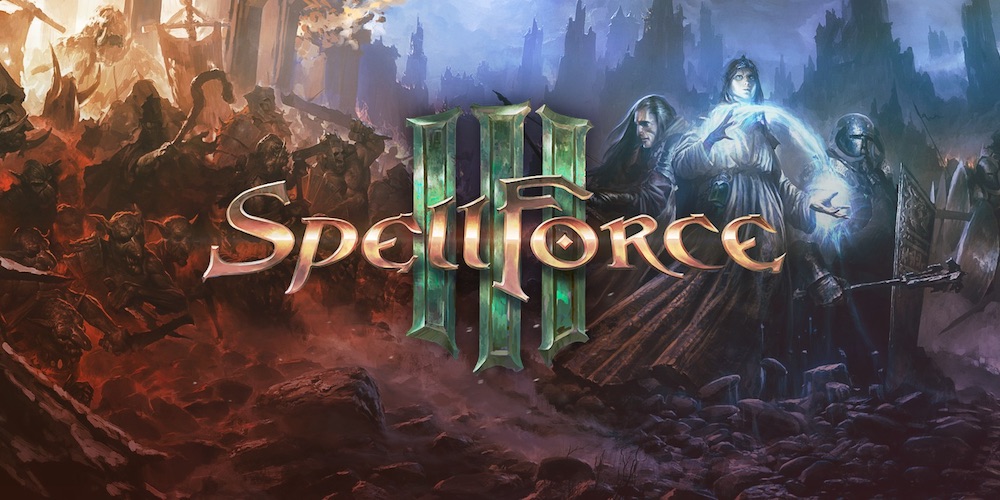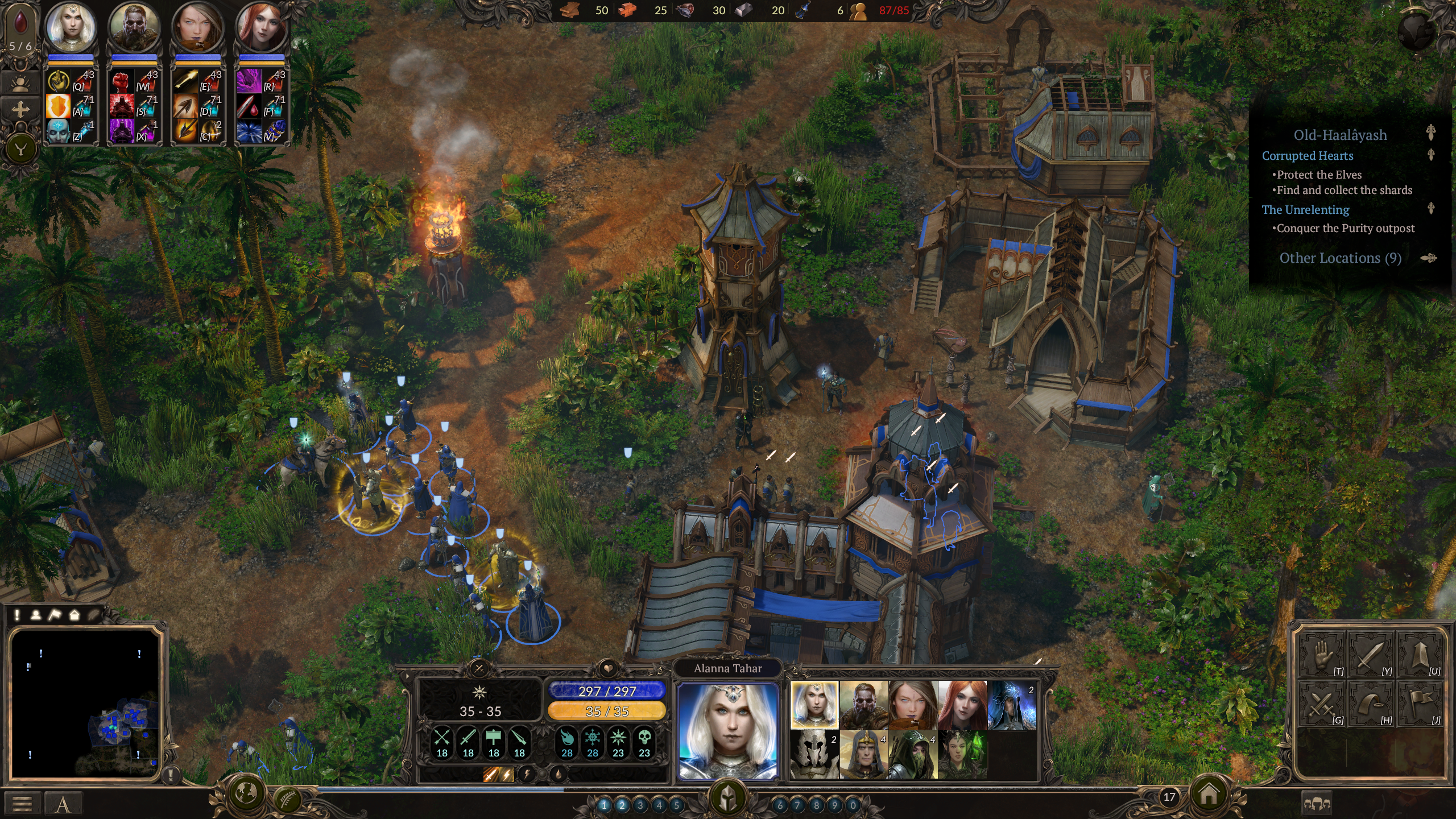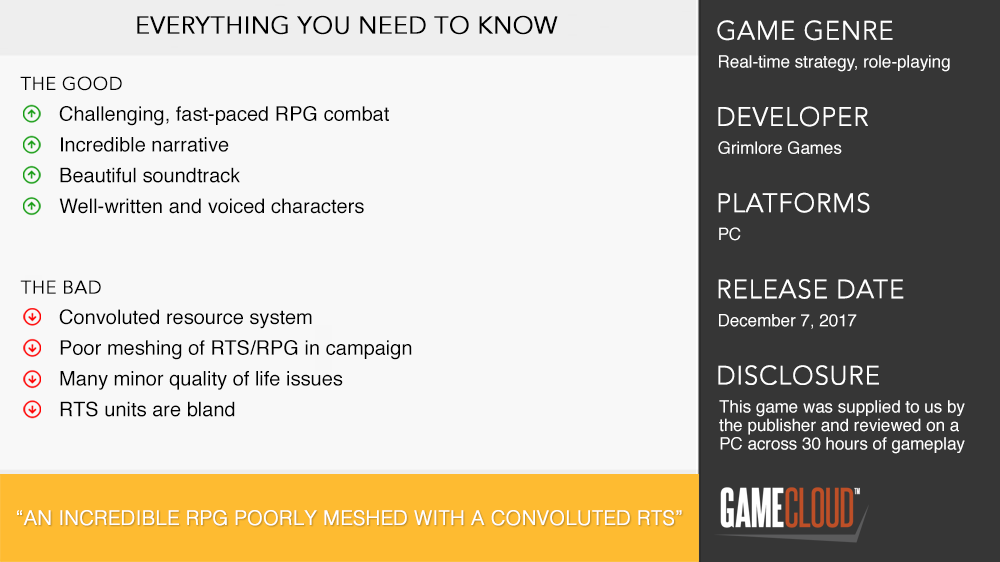
SpellForce 3 is an isometric RTS and RPG hybrid, the proportions of which vary between campaign and skirmish. I hadn’t played any of the prior SpellForce games, so I had no idea what to expect, but my time with the SpellForce 3 campaign has been extremely positive despite the many criticisms I have of it.
The real-time element of SpellForce 3 is heavily emphasised even in the RPG combat, which can be best labelled as “twitchy,” requiring quick precision and use of hotkeys to control four heroes with no pausing or turns. Each hero has access to many abilities, and managing them in real-time is challenging in several different aspects. The utility of each ability needs to be memorised as you can’t leisurely read tooltips during combat, ability cooldowns need to be constantly checked to reuse important ones as soon as they are available, enemy channeling abilities can be interrupted by quick cast abilities of your own, and certain abilities provide status effects that synergise with other abilities. I found the fast-paced rush of the RPG combat to be extremely fun, and the interface allows you to monitor each heroes abilities at a glance without having to select them individually.

The other RPG aspects I found to be a mixed bag; for example, the character progression and gear is unremarkable while the narrative had me hooked because its characters are well written (and voiced) and do not feel like generic stereotypes. There’s plenty of dialog with NPCs, and much of the world is grim and mature but offset with the occasional goof and meme reference. As a single player (or co-op) RPG, SpellForce 3 is amazing – but, unfortunately, the RTS gameplay meshes poorly with the campaign.
The RTS gameplay consists of all the mechanics that you’d expect; gather resources, build structures, and produce units that make up a counter system. The resource system is very complicated as there are eight resources in total (including refined resources), all of which need to be transported between bases to be available for use. The economy is convoluted and confusing on its own, let alone when combined with the fast-paced RPG gameplay; it requires too much management and attention for it to blend well in the campaign. The most similar game to SpellForce 3 is WarCraft 3, which combined RPG heroes and RTS gameplay, but it worked much more elegantly because the economy was simple with only two resources.
Aside from the economy, the progression of heroes in the campaign makes them overpowered compared to units. Each mission starts off with four heroes who have all of their items, attributes and abilities carried over from previous missions, so the heroes become their own army. Even on hard, I found the RTS missions unchallenging because of the power of the heroes. Although, they still took a while to complete because of how long it takes to destroy enemy bases (which keep rebuilding) and to complete many of the mundane objectives like clearing obstacles with workers. I’m a hardcore RTS fan, which is perhaps the problem, but I always found myself dreading the RTS missions because it felt like a dull 30-minute diversion from the fun RPG game I wanted to keep playing.

Controlling the RTS units is unengaging because compared to the RPG characters, they’re bland, have lacklustre voice acting and no abilities or micro-ability. I’m not saying the RTS gameplay is bad – it actually seems interesting from my foray into Skirmish and Multiplayer, because there the heroes are balanced, less accessible and less of an overall focus. I just would have preferred if SpellForce 3 ditched the RTS side of the campaign and had it entirely an RPG, like what Dawn of War 2 did with their campaigns, or use a simplified version of the RTS gameplay and only in a small number of missions. Fortunately, the RTS gameplay only makes up a limited part of the single-player campaign.
SpellForce 3 also has many minor issues that can hinder the experience, from frustrating interface problems to immersion breaking typos and reuse of main character portraits. Ability hotkeys are assigned to a grid location, so they’ll change if the order of your party changes, which is timely to swap. Some missions require a specific character, and in a particular slot, so your hotkeys can get messed up and require relearning multiple times. You can’t view the items of your companions in your base region, so when considering purchasing items from the many merchants there, you have to load a party and travel to a different region with a load screen, then try to remember all their items stats or take screenshots, then go back to the base region and sit through another load screen, then walk around and find every merchant and compare their items with what you remember looking at on your companions. Buying and selling items can be especially frustrating as you’ll struggle to find merchants who have the gold to buy all your items off you, so you have to travel around to multiple merchants, sometimes in different regions requiring load screens, to each offload part of your inventory to, which is tedious and time-consuming.

SpellForce 3 combines a fantastic RPG experience, which I enjoyed immensely, with a mediocre RTS game, which competes for attention and meshes together poorly in the campaign (it does work significantly better in Skirmish and Multiplayer, however). The presentation, narrative and characters are superb, and combined with the twitchy fast-paced RPG combat, it makes for a compelling campaign, even if it’s filled with lots of minor frustrations. I also want to praise SpellForce 3 for being the first new RTS game in a very long time (as far as I’m aware) to launch with rebindable hotkeys, replays and multiplayer LAN. It’s certainly not an elegant game, but there’s still a fun time to be had playing it.











